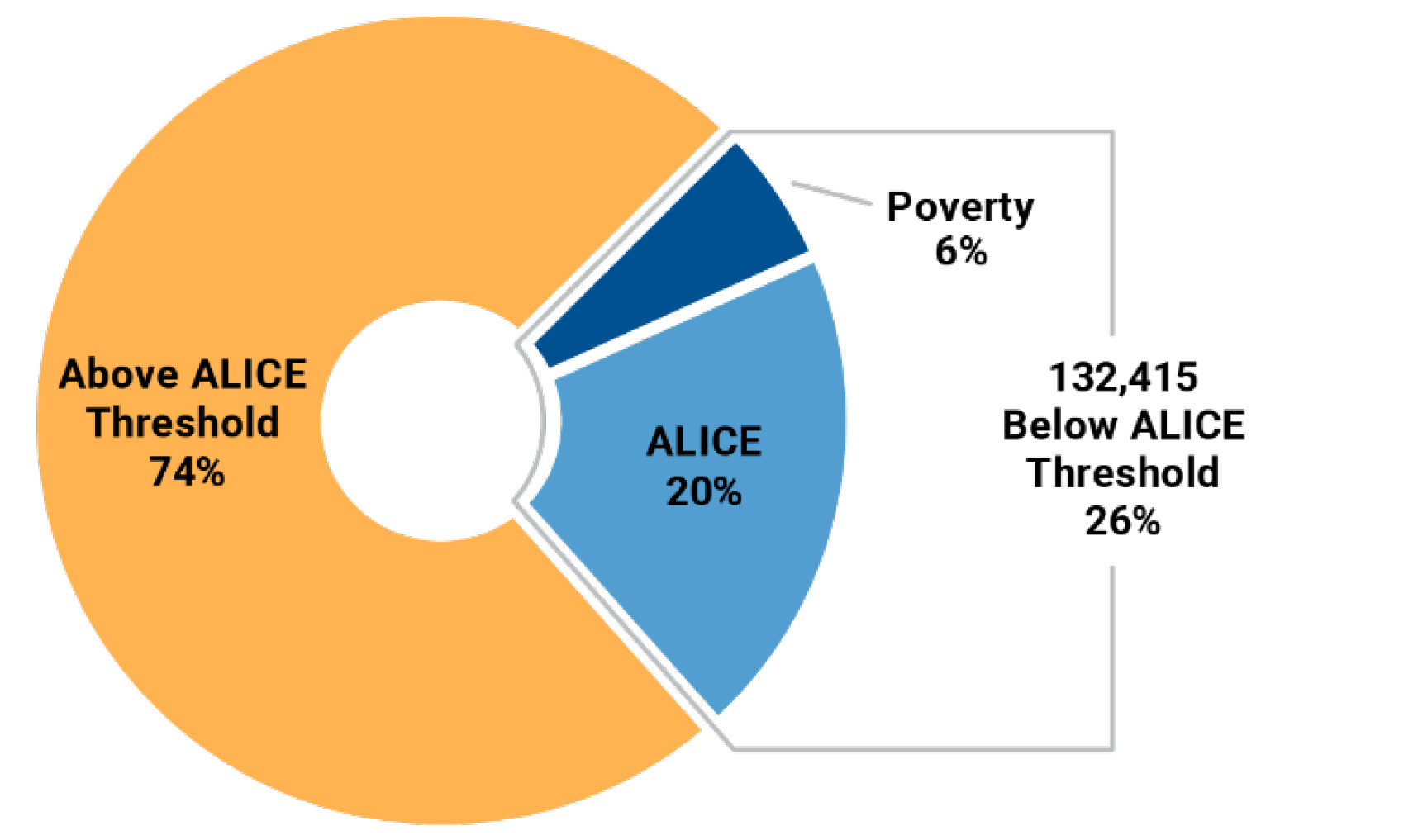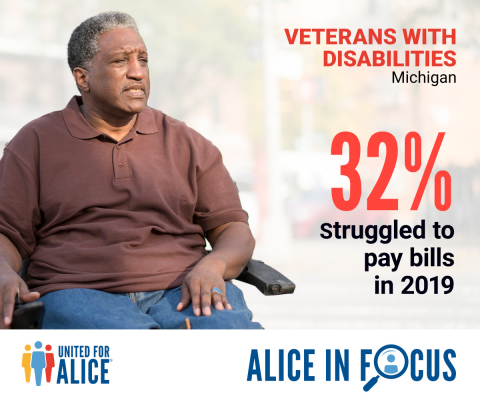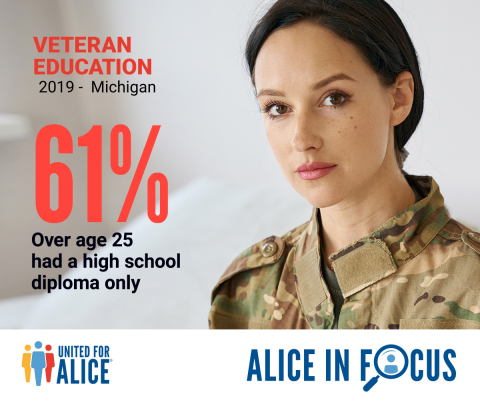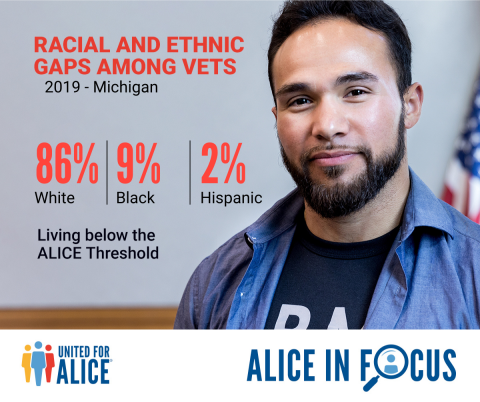
FINANCIAL HARDSHIP AMONG VETERANS: MICHIGAN
In 2019, there were 511,490 military veterans in Michigan. Overall, a majority of them have fared better economically than nonveterans, in line with a belief that our nation must meet veterans’ basic needs given their service and sacrifice.
Yet in 2019, a substantial 132,415 of those who served our country struggled to make ends meet in Michigan. According to the Federal Poverty Level (FPL), 6% of veterans in Michigan (32,227) lived in poverty in 2019. But United For ALICE data shows that another 20% (100,188) — more than three times as many — were also experiencing financial hardship, in households that earned above the FPL but not enough to afford the basics in the communities where they lived.
The reality is that more than one-quarter (26%) of all veterans in Michigan lived in a household with income below the ALICE Threshold of Financial Survival in 2019. This includes households in poverty as well as those who were ALICE: Asset Limited, Income Constrained, Employed. ALICE households don’t earn enough to afford housing, child care, food, transportation, health care, a smartphone plan, and taxes — the basics needed to live and work in the modern economy. This ALICE in Focus Research Brief shows that there are veterans below the ALICE Threshold of all ages, races/ethnicities, and educational levels, in a variety of living arrangements and employment situations, in Michigan and across every state. The share of veterans below the ALICE Threshold in 2019 ranged from 21% in Wisconsin to 36% in Louisiana.
Veterans by Household Financial Status, MI, 2019
Number of Veterans in Michigan = 511,490


KEY FINDINGS
- Of the 511,490 veterans in Michigan in 2019, 6% were below the FPL, and an additional 20% — more than three times as many — were ALICE.
- While there are veterans from all racial/ethnic groups in Michigan, economic inequities persist: 41% of American Indian/Alaska Native, 36% of Black, and 28% of veterans of two or more races lived in households below the ALICE Threshold in 2019, compared to 25% of White veterans.
- In 2019, two thirds (66%) of veterans in Michigan over the age of 25 had not completed post-secondary education. Of veterans who graduated from high school but had not completed post-secondary education, 30% were below the ALICE Threshold.
- Veterans with disabilities faced higher rates of financial hardship in Michigan: 32% lived in a household with income below the ALICE Threshold, compared to 23% of veterans without disabilities.
- In Michigan, only 53% of veterans below the ALICE Threshold and 48% of veterans with disabilities below the Threshold had high-speed internet access in 2019.




